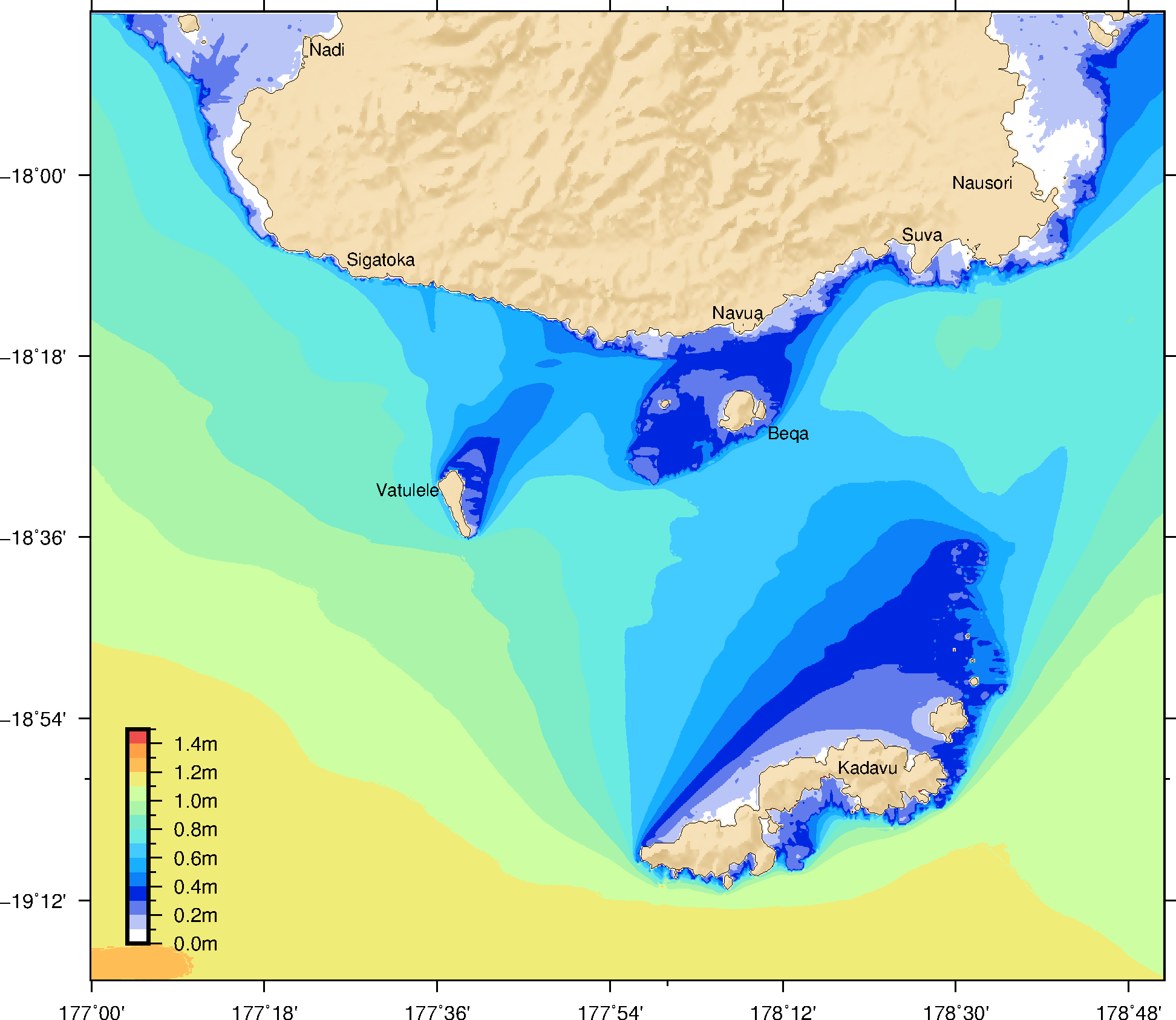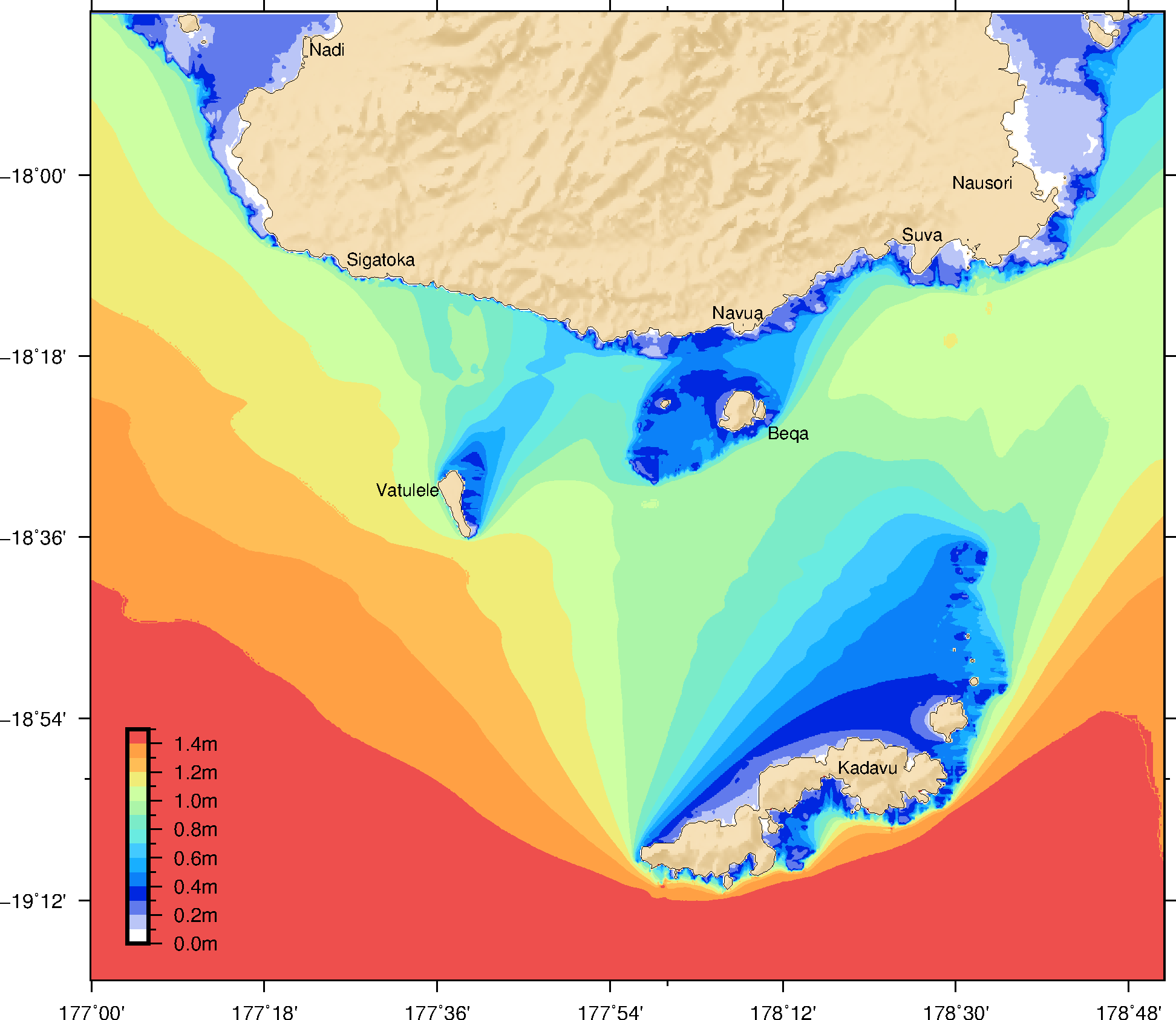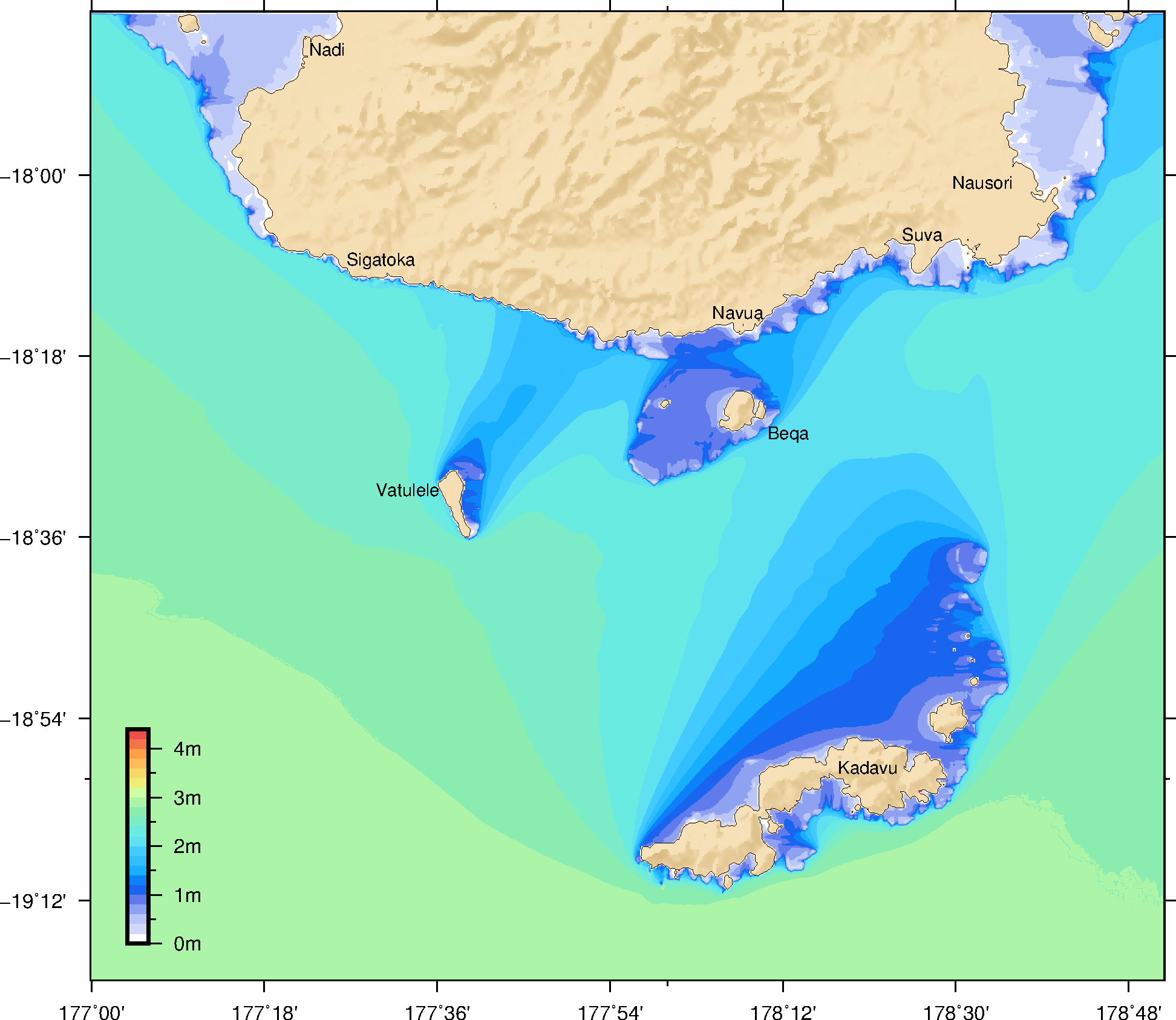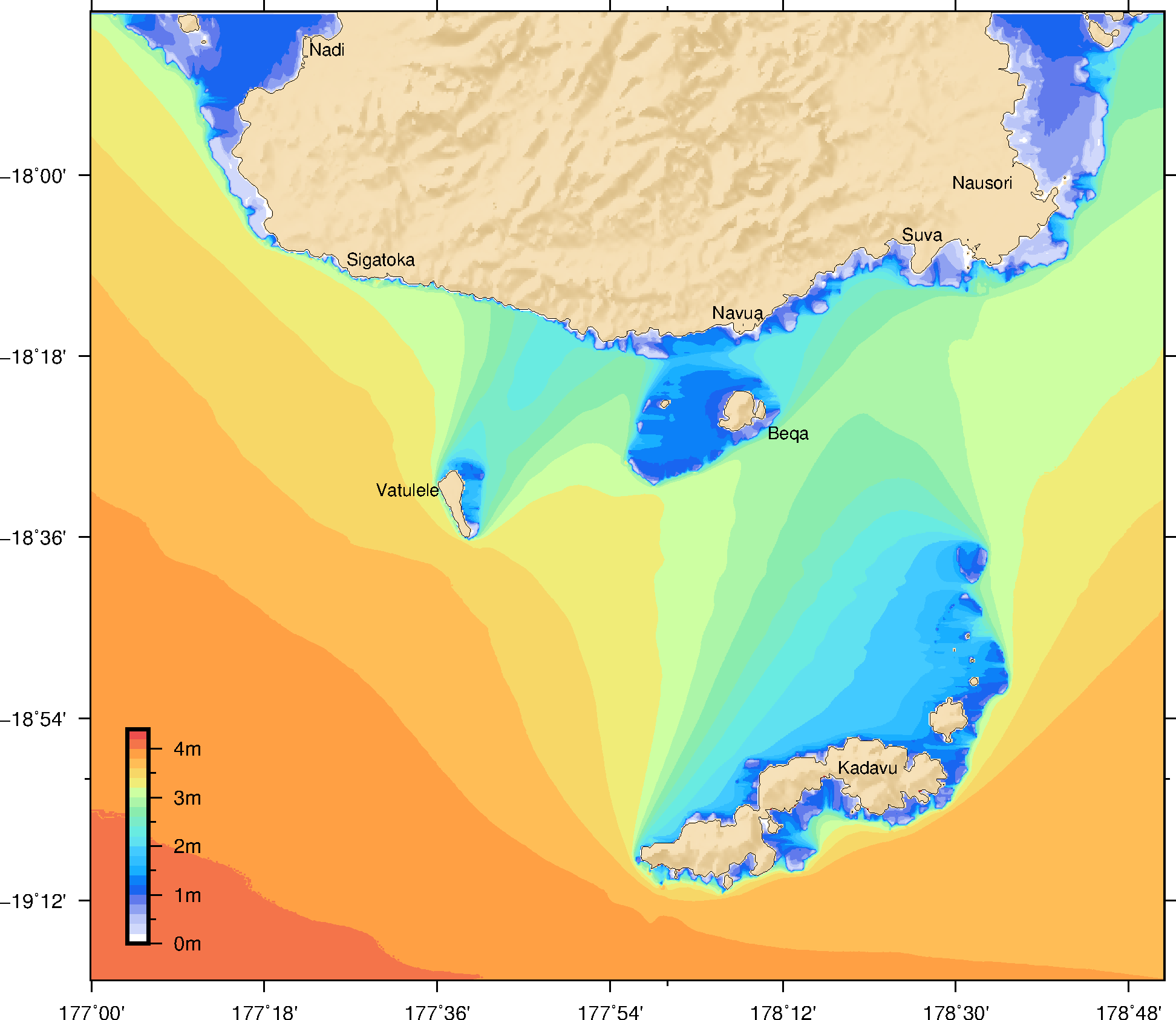General Wave Climate
Fiji is located on the pathway of the large swells generated in the Southern Ocean and the Tasman Sea, earning itself the reputation of a prime surfing destination. But Fiji is also located on the southern border of the South Pacific Convergence zone and, as a result, is exposed to seasonal trade winds that greatly influence the wave climate.
The South Pacific swells are generated near the storm belt some 3,000 km away from Fiji, South West to South East of New Zealand. By the time the waves reach Fiji, their wave period has increased to 15s and more and they are often relatively large (1.5—2.5m). The Southern Ocean storm belt is active all year around so these swell are always present but they are more frequent and larger during the South Hemisphere winter (June to August).
Compared with the Southern Ocean storms, the Trade Winds do not blow very strongly and can only generate medium waves with a wave period between 6 and 10s. These waves are directly associated with the wind so when the wind stops they disappear. The coasts exposed to the South East, East and North East are affected by these waves. The trade winds are dominant in the South Hemisphere winter (June to August).
Wave Height Classification
Small waves and large waves mean something different whether you live in an area exposed to the waves or in a sheltered location. The figures below map what would be considered tiny, small, large and severe waves at different location in Fiji.

Tiny wave Height (1st percentile)

Small wave height (10th percentile)

Large wave height (90th percentile)

Severe wave height (99th percentile)
Previous
Next



